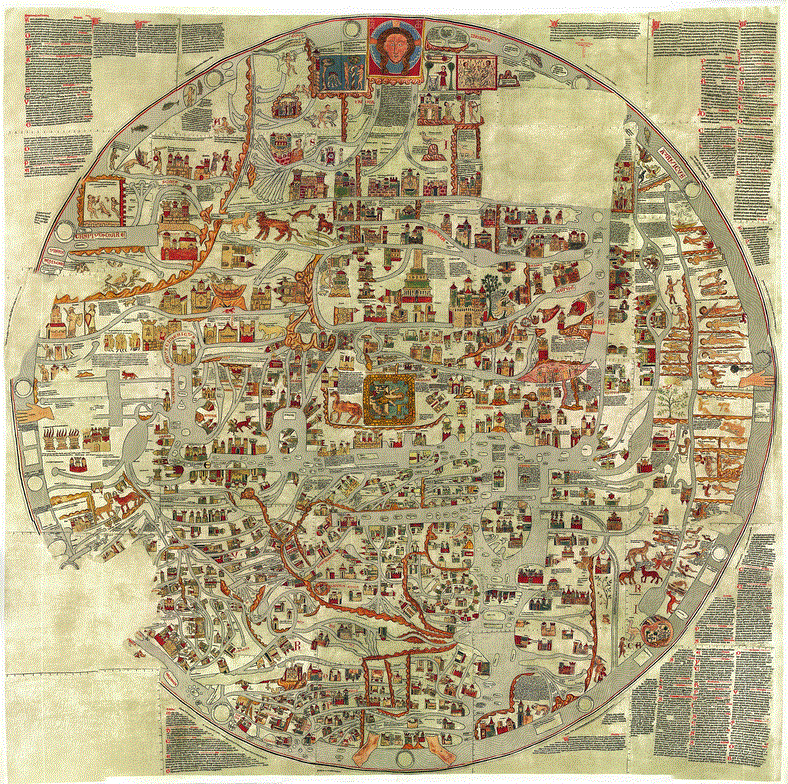Over breakfast this morning, while reading “Mapmaking in the World” in a History of World Societies, my attention was riveted on the Ebstorf Map which was drawn in the thirteenth century. Originally, it was drawn on thirty sheets of vellum and measured about 12 feet in diameter. The original did not survive a bombing of Hanover, Germany in 1943 during WWII. Fortunately, extensive photographs had been taken of it prior to that. What caught my attention was the shape of this map and its orientation. It immediately reminded me of Elaine Robson’s artist Gurme’s rendition of the Christian wheel of existence which was held by Yamantaka, the Tibetan god of death, whose grasp was broken by the sacrificial death of Jesus Christ on the cross.
Sacred Geography The Ebstorf Map and the Tibetan Sand Mandala
December 11, 2013 by Leave a Comment
The Ebstorf Map is drawn as a circle. Earlier, when I was looking at one of the oldest examples of map making in existence, I was reminded of the Cyrus Cylinder (587 B.C.), because the map was stamped in clay and surrounded by cuneiform inscriptions. The map was dated about 600 A.D. and so was probably made around the same time. The Babylonian world map was drawn in a circular form with an outer band which looked much like the cremation fields (the world) in the Tibetan sand mandala which were made in the 7th century AD.
The Ebstorf Map while not drawn to scale, represents a Christian view of the known world at the time. Outside the circle at the top which faces East is the face of Jesus Christ, on the bottom of the circle, facing West, are the feet of Jesus, on the north and south are His hands stretched out. In the center of the map is Jerusalem with a faceless Jesus sitting on the throne, which must represent His yet revealed triumphal resurrected self. “Jerusalem occupies the center of the map to represent the place of Jesus’s death as the center of the Christian world. The Ebstorf Map..was intended to convey a religious message, a declaration of faith.”
As I looked at it, all the images of the Tibetan Buddhist sand mandala kept popping up in my mind. Satan, disguised as an angel of light, always attempting to dethrone, the King of kings, the LORD of lords, taking center stage. The Tibetan Buddhist religious blueprint, complete with gods and goddesses, palaces, and cremation fields. The Ebstorf Map on the other hand tells the story of Jesus Christ, the one True God, shows Adam and Eve being tempted in the garden by the serpent, the serpent finally defeated by the Messiah. It shows the world surrounded by the ocean.
It will take more time to digest the implications, but what I found encouraging, was the fact that the earliest attempts at map making focused upon making Jesus the center of everything and that the mandala seems to be nothing more than one more counterfeit in an attempt to usurp the glory that belongs to no other than the Messiah, Yeshua, who came to destroy the works of the Devil and will not share His glory with another.

Speak Your Mind